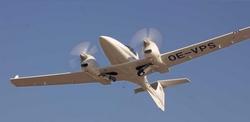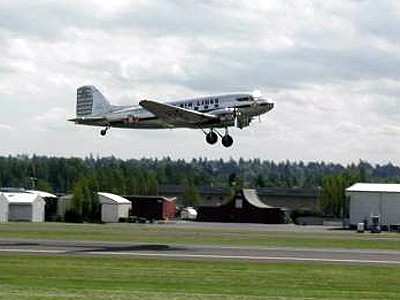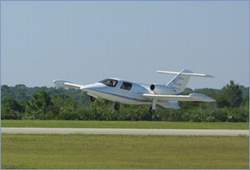The Right Thing At The Right Time
by Gary Wiblin
 I popped down to our local flying
club primarily to have a beer, but also in the hope of gathering
some fodder for this column. I didn't have long to wait.
I popped down to our local flying
club primarily to have a beer, but also in the hope of gathering
some fodder for this column. I didn't have long to wait.
One of our more experienced PPL's had a captive audience under
his spell as he regaled his eager listeners with his own version of
after-take-off checks. They were enthralled. So was I! I listened
on with incredulity.
Our fearless aviator was trying to have us believe that power
should be reduced to the cruise-climb setting as soon as possible
after lift-off. Only then should the wheels be retracted. I
couldn't believe that an otherwise intelligent person would dream
up such an insane procedure. I asked him to elaborate. He said that
because the aircraft handbook specifies that the engine should not
run at full power for more than five minutes, he had decided that
it was obviously bad for an engine to do so and therefore the power
should be reduced as soon as possible after take-off. This is
definitely not the case for a number of reasons, two of which
deserve discussion.

Most aircraft piston engines are indeed rated for full power for
only five minutes. In normally aspirated engines (not
turbo-charged) this is only really a consideration at or near sea
level. Those pilots flying aircraft with normally aspirated engines
from airfields with elevations in excess of 4000 ft have nothing to
worry about. Their aircraft engines will be unable to develop more
than about seventy-five percent power anyway.
Aircraft engines are in any case designed to work hard and
continuously and a good 'burn' on every take-off is good for the
engine. It helps to remove any glazing off the cylinder walls
normally caused by continuous operation at low power settings.
Another thing about piston engines is that if something is going
to go wrong with it after take-off it will normally be as you
reduce power. In other words, don't fiddle. Leave well enough alone
until you have reached at least 1500ft AGL.
You do not want to be burdened with unnecessary menial tasks
shortly after getting airborne. Why create more work when you have
enough going on as it is? Up until the gear retraction point you
should still be ready for the possibility of an abort. Beyond gear
retraction it is all systems go and you want to be gaining precious
altitude as quickly as possible. You definitely do not want to be
reducing power at this stage.
 Remember too that one of the busiest
times for a pilot is shortly after take-off. You are leaving
ground-effect in a possibly heavily loaded aircraft, you need to be
wide awake for the possibility of an engine failure after take-off,
you need to initially maintain runway center-line, and of course
you need to comply with the clearance given to you by ATC.
Remember too that one of the busiest
times for a pilot is shortly after take-off. You are leaving
ground-effect in a possibly heavily loaded aircraft, you need to be
wide awake for the possibility of an engine failure after take-off,
you need to initially maintain runway center-line, and of course
you need to comply with the clearance given to you by ATC.
The drill for engine failure in a light twin is to immediately
stop the yaw caused by the failed engine, select the attitude
required to attain and maintain blue line speed (vyse, best rate of
clime on one engine), confirm that the good engine is developing
full power, retract the flaps to optimum (in the case of a
go-around), and retract the undercarriage. We would then have to:
Identify, Verify and Feather. As can be seen there is quite a lot
to do and even a well prepared pilot can have his hands full
avoiding pending disaster in such a situation. This is why we need
to reduce the workload as much as possible for the after take-off
segment. There are two ways we can do this:
We can choose a gear retraction point and if anything goes wrong
before that point, we can abort the take-off. This point may very
well be at some height above the runway, but with sufficient length
remaining to land back on the remaining runway. This means that if
an engine now fails after gear-retraction point, we will not have
to worry about retracting the undercarriage as part of the clean-up
drill.
If we leave the engine running at full power until at least
1500ft AGL and then experience engine failure we will also not have
to apply full power on the good engine as it will already be
developing full power. All that will be left to do will be to
identify the failed engine (dead leg, dead engine), verify it (EGT,
fuel flow, throttle back and check no change in rudder pressure),
and feather.
 Personally I never reduce power
after take-off on a normally aspirated engine, even when taking off
from sea level. I have found that by the time I climb through about
4000 ft the manifold pressure has reduced to about 25 In. anyway
and I am then able to reduce the rpm to that required for
continuous climb, thereby negating the need to reduce power after
take-off only to have to again increase the power as the engine
begins to lose manifold pressure due to the constantly increasing
altitude.
Personally I never reduce power
after take-off on a normally aspirated engine, even when taking off
from sea level. I have found that by the time I climb through about
4000 ft the manifold pressure has reduced to about 25 In. anyway
and I am then able to reduce the rpm to that required for
continuous climb, thereby negating the need to reduce power after
take-off only to have to again increase the power as the engine
begins to lose manifold pressure due to the constantly increasing
altitude.
In the training environment students should be made fully aware
of the dangers of over-boosting an engine and using the correct
power settings in the cruise, but should also be taught to
prioritize tasks shortly after lift-off and not be fixated on
reducing engine power. Leave it running flat out for a while. It
likes it so.
(Gary WIblin is fast becoming one of our favorite
contributors on issues of aviation safety. You can subscribe to his
Aviation & Safety Magazine by contacting him at the email
address below -- ed.)
 ANN's Daily Aero-Term (04.25.24): Airport Rotating Beacon
ANN's Daily Aero-Term (04.25.24): Airport Rotating Beacon ANN's Daily Aero-Linx (04.25.24)
ANN's Daily Aero-Linx (04.25.24) Klyde Morris (04.22.24)
Klyde Morris (04.22.24) Airborne 04.24.24: INTEGRAL E, Elixir USA, M700 RVSM
Airborne 04.24.24: INTEGRAL E, Elixir USA, M700 RVSM Airborne 04.22.24: Rotor X Worsens, Airport Fees 4 FNB?, USMC Drone Pilot
Airborne 04.22.24: Rotor X Worsens, Airport Fees 4 FNB?, USMC Drone Pilot





